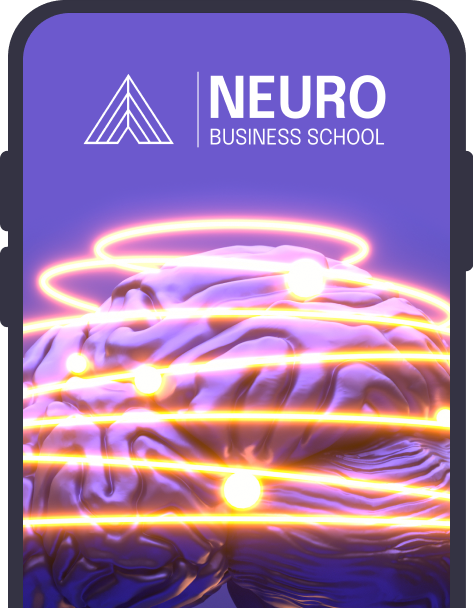In the vast (and endless) world of sales and marketing, you’ve surely heard the term “consumer decision-making,” which at first glance makes us think it has to do with the things a person thinks or feels before purchasing a product or service.
But what would you think if we told you it goes much further? Without realizing it, before, during, and after the purchase, an entire process occurs in people’s minds that can influence or promote the “I need this, I must buy it” attitude.
Continue reading and discover what the decision-making process is, what types there are, why it’s important for your business, and you’ll even see some examples so you can start applying it to your business right away.
What is decision making?
To put it bluntly, it’s the process we all go through, where we realize we have a need that needs to be addressed, whether it’s a product or service.
To do this, we gather information about what we want to buy, compare options, make a purchase, and finally evaluate whether it was a good purchase and how the shopping experience was.
Decision-making isn’t just applied to selling; it’s present in every moment of our lives, from the moment we wake up until we go to bed.
Why is it important for sales?
It’s simple. This process is important for any company because it allows them to understand their customers‘ needs and desires, helping them develop ideas that allow them to innovate and create better services, products, and campaigns that are aligned with what their potential customers are looking for. In addition:
- It allows you to segment and personalize, tailoring your offers or messages to your specific needs and making your proposals relevant.
- You reduce marketing costs by focusing your resources and campaigns based on real consumer behavior data.
- According to Harvard Business Review, the brain hides 80% of the reasons why people don’t buy. Therefore, understanding this process helps you anticipate and disarm objections before or during the sales process.
Stages in the Decision-Making Process
The consumer’s mind is fascinating, and it goes through five processes before reaching your product, which we’ll break down below so you can use them to your advantage.

1. Recognizing a Need
In this first step, the consumer’s brain, in its reward center, realizes they have a need and is driven by that desire to acquire something that satisfies it.
What initially arises as a need later becomes impossible to ignore, which motivates the person to move on to the next step in the decision-making process.
2. Search for alternatives
The prefrontal cortex (the rational area of the brain) motivates consumers to determine which products or brands are best suited to their needs. Therefore, they compile and compare them until they find the one they consider worth purchasing.
3. Evaluate alternatives
After consulting several sources, consumers weigh the pros and cons and may have a tendency toward brands that are recognized, recommended, or have positive opinions from other buyers.
At this point, the user sees reviews, photos, and stalks, but something complex happens internally. On the one hand, there is the insula (a part of the brain that detects danger) and on the other, the nucleus accumbens (another area of the brain that motivates and anticipates rewards), deciding whether or not one option or another is worthwhile.
4. Buying
At this stage, the consumer already knows what they want to buy, has evaluated all the options, including what product and where, and is ready to complete the purchase.
However, there are some factors that can prevent a sale at this point, such as the cost of the item they are purchasing, poor customer service that can make the person flee rather than buy, the store or brand not being open that day, among other factors.
Post-Purchase Experience
Once a purchase is made, the brain analyzes whether the experience is worth repeating or not. To do this, the consumer considers how they felt about it, whether it was truly a good investment, whether it’s worth buying from that company again or recommending it, etc.
This point is often overlooked by companies because they think it’s enough to close the sale, but nothing could be further from the truth. According to HubSpot, 62% of dissatisfied customers don’t return, but 92% will if they are promptly acknowledged or rewarded.
What would be an example of decision-making?
You’re sitting in front of the TV and see a commercial for the latest iPhone with a night vision camera. At that moment, your brain starts releasing dopamine, and you imagine what your photos would look like. You begin searching for information, its features, its price, and then you evaluate alternatives, between that brand and others.
Finally, you decide the iPhone is the best option, buy it, and after holding it in your hands, taking lots of photos, and uploading it to your social media accounts, you decide it was the best purchase. With that simple thought, you’ve already gone through the entire decision-making process unconsciously.
Do you want to leverage decision-making to your advantage?
As you can see, it’s not a trick or a trap; it’s about understanding how the brain works and hacking it so sales grow and flow. At Neuro Business School, we teach you how to master those switches in the consumer’s brain that are ready to buy and just waiting for you to activate them.
With our bachelor’s and master’s degrees in neuromarketing, our students stop competing on the price of their products and become part of the 8% of companies that dominate sales, just like the largest companies worldwide.
Don’t hesitate, enroll today and be part of the 8% that dominate the consumer’s brain!
Frequently Asked Questions
What factors influence consumer decisions?
From emotions, lifestyle, past experiences, price-performance ratio, the advertising strategy used, to product design, these are some of the factors that can affect perception and, therefore, the consumer’s final decision.
Are there different types of decision-making?
Yes, five to be exact. The first are common decisions, such as buying your favorite brand of coffee; the second are limited decisions, which would be choosing between one toothpaste or another; the third are extensive decisions where the consumer thoroughly analyzes which car to buy; the fourth are typical impulsive decisions, such as buying a sweet treat while waiting in line at the supermarket; and the fifth are social decisions that are influenced by others, such as trends, fashionable clothing, etc.




